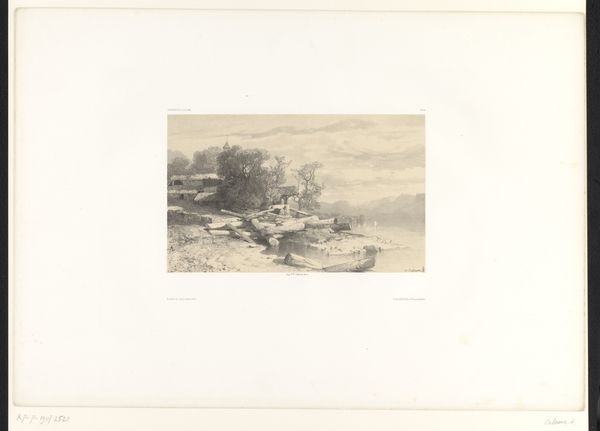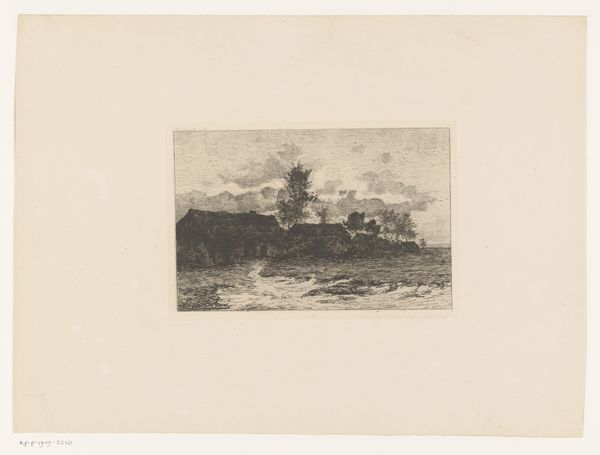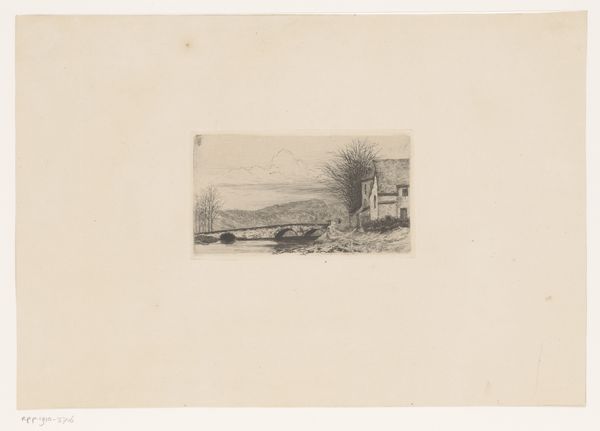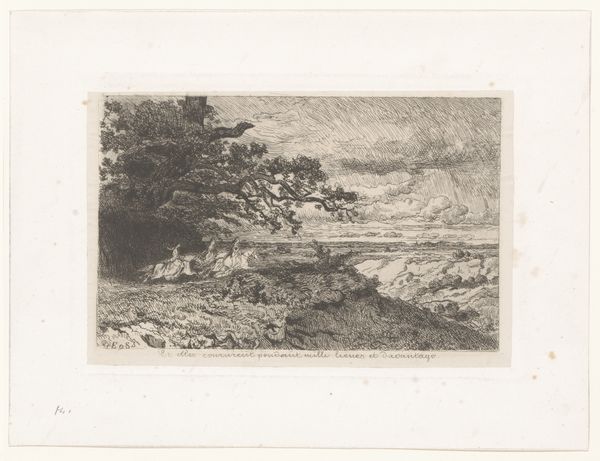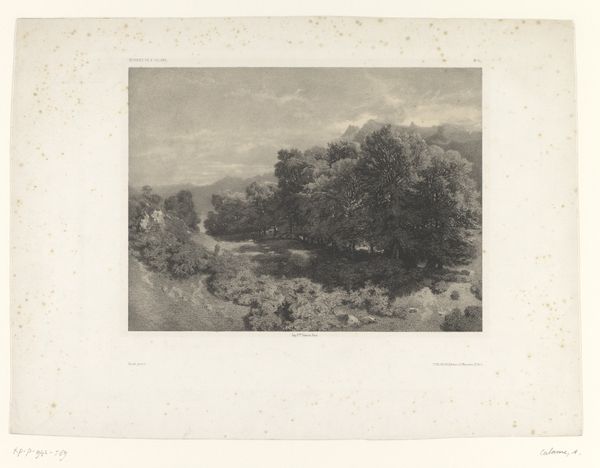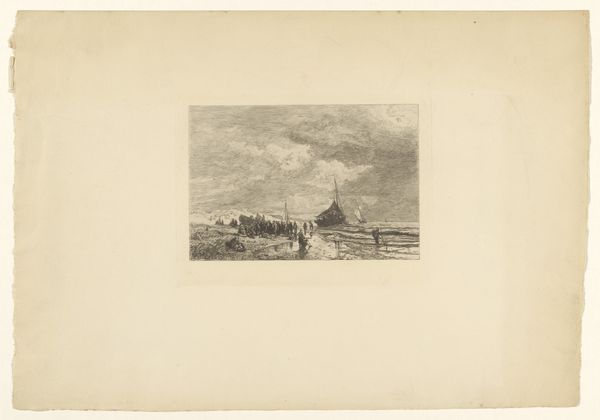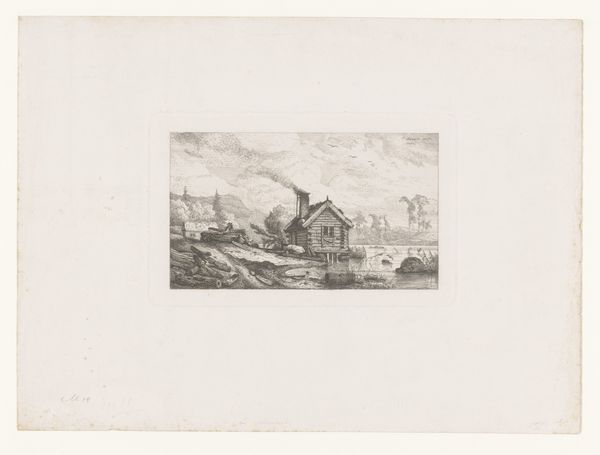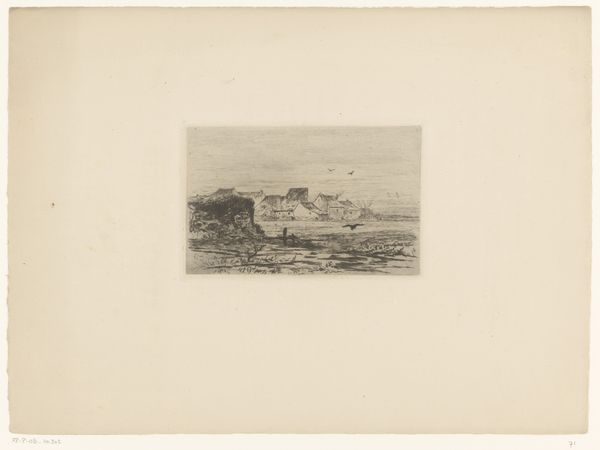
print, etching
# print
#
etching
#
landscape
#
linocut print
#
realism
#
monochrome
Dimensions: height 130 mm, width 199 mm
Copyright: Rijks Museum: Open Domain
Emile de Baré etched this print, titled 'Farms on a country road by a lake,' sometime between 1855 and 1902. It depicts a rural scene with a cluster of farm buildings and a path leading off into the distance. What might such an image mean at the turn of the twentieth century? In the Netherlands, rural life had long been idealized as the bedrock of national identity, a symbol of tradition and stability. However, this was also a time of rapid industrialization and urbanization. Artists began questioning traditional values and experimenting with new forms of expression. De Baré's naturalistic style is far from radical. It's possible that in choosing such a subject, De Baré was commenting on the changing social landscape of the Netherlands. Was he making a political statement? Perhaps more research into the history of Dutch printmaking and rural representation might give us a clearer sense.
Comments
No comments
Be the first to comment and join the conversation on the ultimate creative platform.
